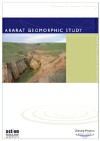Ararat Geomorphic Study
Prior to agricultural development the upper Hopkins River Basin could be divided into three major morphological zones: unchannelled slopes, terraced floodplains and floodplains. Gullies in the region, have generally developed over the last century in the channelised slopes of the Tertiary and Quaternary deposits that mantle the metamorphic and granitic intrusions. Their presence in the landscape has been a response to a number of factors, which contribute to the erosional setting in which they have developed (geology, landforms, soil types, and historical changes).
Sinclair Knight Merz (SM) (external link) was engaged by the Glenelg Hopkins Catchment Management Authority (GHCMA) (external link) to undertake a geomorphic study of the upper Hopkins River catchment, southwestern Victoria. The downstream limit of the study area is the section of the Hopkins River immediately downstream from the junction of Jacksons Creek with the Hopkins River. Within the study area, three physiographic units have been chosen for analysis: Ararat Hills to the west of the study area, Challicum Hills to the south and Skeleton Hills to the north.
The upper Hopkins River Basin as defined for this study has a catchment area of around 426 km2 and forms part of the upper Hopkins River subcatchment. The area is bordered by the Ararat Hills to the west, the Challicum Hills to the south and the Skeleton Hills to the north. The downstream limit of the study area is the section of the Hopkins River immediately downstream from the Jacksons Creek confluence.
The objective of the project was to complete a geomorphic assessment of the gully networks in the study area. The project required an understanding of the gully processes and erosion activity along with the processes of sediment transport and storage. The study considered the following four questions.
1) Where are the major areas of erosion in the study areas (sediment sources)?
2) How is eroded sediment moved through the gully networks (sediment transport)?
3) Where is the sediment deposited (sediment sinks)?
4) What are the management implications of erosion and deposition in the upper Hopkins River catchment?
 |
|


